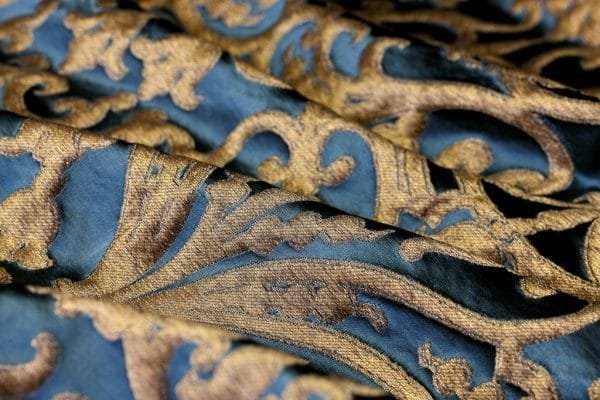
The fabric of the Renaissance, that made its way from China to Turkey to Greece and Cyprus to Italy, now lies in the hand of a few. The soft, sumptuous fabric engineered through the process of piling up and weaving two textiles on century old looms is a skill that is not quite easy to master. Velvet now can be mass produced, replacing silk with synthetic materials and the looms with machinery. However, the last remaining artisans who are trying to preserve the old, treasured, traditional ways can be found in a quaint European city.
La Serenissima: Home of the Masters
When I say Venice, a lot many things come to mind – the gondolas, the Rialto Bridge, St. Mark’s Square, the carnival and of course the tourists. What doesn’t come to mind and stays hidden from sight is the centuries-old craft of velvet weaving. Now, I have been to Venice twice, first during the carnival where the whole town comes out to parade reminding you of an 18th century Venice. The second, during the summer when the waiting period for a gondola ride is an hour minimum. I could blame the elaborate mask and the flocks of tourist for my inability to see a craft but it could also be the fact that the historic art has so intricately woven itself into the culture of the city that it almost does not stand out on its own.
We are aware of the byzantine masks and the vibrant Murano that comes out of La Serenissima for the world to consume, but rarely can one get their hands on the luxurious fabrics of Venice. It gets all the more difficult when there are only three remaining families that have mastered the art of velvet weaving. The artistry found its way into Venice during the 14th century when the maritime traders imported raw silk from the east. The extravagant robes, curtains and upholstery in the paintings in the museums in Venice are proof of the long history of these textiles.

Treasured techniques
Velvet is known to be the fabric of the royals and the aristocracy. It provides a certain richness and decadence to every object it is used on. However, besides the velvet’s quality itself, the Bevilacqua Family add a taste of exclusivity by weaving this textile on their 18th-century handlooms with a technique called soprarizzo, a method of manual production. The unique method of combining cut and curly velvet gives each piece a three-dimensional design allowing light to reflect variedly on the two fabrics in a different way. They pride immensely on their skill but even with years of practice, the pressure on the loom by a craftsman could vary on some days, resulting in a limited-edition handwoven piece ornated with Byzantine and art-deco patterns.
Earlier, there were a few who could indulge in such eloquence but with machine weaving and the replacement of silk with synthetic materials for a low cost, there remain now a few who choose to source this fine fabric. Luigi Bevilacqua’s family is trying to preserve this long-standing tradition by making their workshop a regular for restorers, interior designers and runway labels. There are now 18 looms and 6 weavers that work at Tessitura Bevilacqua. With only 30-45 cm of fabric completed in a day, you can expect to wait a long time for the finished product that could cost you $1000 and up.

The families & their secrets
Bevilacqua family may be the last family to work on 18th-century looms, but you can find luxury fabrics in the factories of the Rubelli Family and the Fortuny Family. The island of Giudecca in Venice holds the many secrets of Marina Fortuny where the family’s factory is located. The manufacturing process is locked away on this island creating a sense of allure leaving you wanting to know more. We may not have access to what goes behind the scenes, but we can marvel at the many masterpieces that hang proudly in their showrooms.
The tradition is now preserved by the younger generations. The craft does have it’s set of fans but it does not quite enjoy the limelight that it deserves to. With leather being the fabric of the year and designers digging archives for inspiration, we can hope that Venetian velvet makes it’s way back in a grander scale and these master craftsmen come to the rescue!
– Written by Nainisha Mehta
Follow the AiSPi Instagram and check out our blog for more on topics like Venetian Velvet and news the latest from the European fashion industry.

